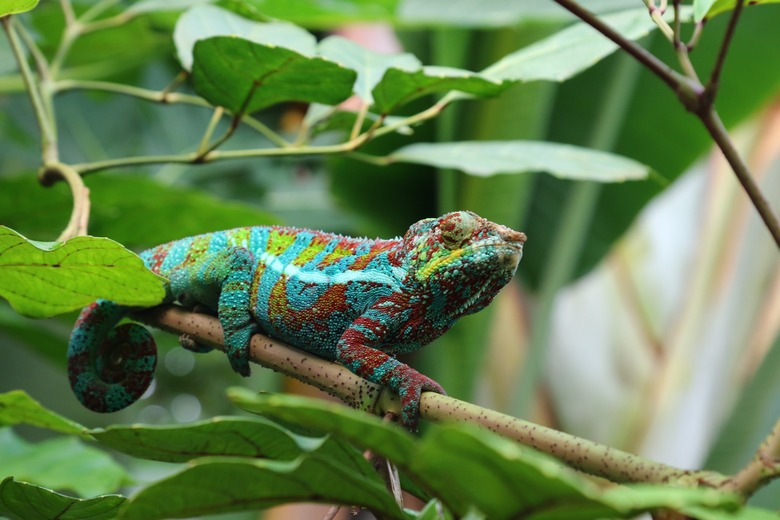Do Chameleons Bite?
Chameleons can bite, but they'll try everything else before they do. Only after trying to hide, run away, or escape and only after warning you with hisses and color changes will a chameleon resort to biting, as he's been left with no other way to defend himself. Chameleons for beginners as a first pet are not ideal because they prefer to be left alone and not be held or carried. If you're looking for a pet to play with and hold, you should look beyond the chameleon.
Chameleons for beginners
Chameleons for beginners
This does not mean that chameleons don't make good pets; they can be wonderful pets for the right person. Not everyone wants to or has the time to walk and play with a dog or sit with a cat in their lap. Many pets want you to be their companion and run to you when they see or hear you. Chameleons are loners who may not even react when you enter the room unless they see you lowering food into their habitat. Even then, they may wait until you leave to chow down.
Chameleons can be fascinating to watch, however. Their multitextured skin, the glorious colors it can become, and the way their bulging eyes can move independently of each other are traits you won't find in a cat, dog, bird, fish, or even other reptiles. When their long, sticky tongues suddenly flick out to grab an unsuspecting insect and draw it back into the mouth in one quick motion, you'll marvel at how this slow-moving lizard can do that in the wink of an eye.
Creating chameleon habitats
Creating chameleon habitats
Don't assume that because these lizards don't require play time means they are easy to care for. Chameleons need habitats that are large enough for them to move around, including room to house tree branches they can climb as they would in their native habitats. They should have secluded spots where they can hang out and not be seen. All of this means chameleons need more than a little terrarium in which to live, as some can grow to be 12 to 18 inches long.
Adequate ventilation for the habitat is important to let fresh air circulate. Chameleons don't drink from or bathe in water bowls, but they require misting or dripping water to stay hydrated. In the wild, chameleons have been seen drinking when it rains. But, they do not drink from still water, like ponds or puddles. Laying ice cubes on top of a screen cover to melt and drip onto foliage can work, but you can also purchase or make drip systems designed for chameleons, including automated watering systems controlled on timers.
Nutritious chameleon diets
Nutritious chameleon diets
Chameleons need insects in order to thrive and keep their colors vibrant, and they should be sized according to the reptile's size. Adults can eat wax moths, roaches, and worms, while baby chameleons can eat fruit flies and tiny crickets, called pinhead crickets. You can occasionally offer fruits and vegetables, like dark, leafy greens and bits of apple, kiwi, melon, strawberry, banana, or mango. Provide these sparingly and experiment to see what your chameleon likes. Chameleons also chew on their environment, like tree branches and any plants you install, so make sure these are nontoxic.
Types of chameleons
Types of chameleons
One of the most common species kept as a pet is the veiled chameleon because it is known for adapting well to captivity and can withstand a variety of temperature and humidity levels. They live for six to eight years, and males can grow to be a foot long. Another is Jackson's chameleon; the males have horns on their head and can live eight to 10 years, although females only live three to five years. Some people like panther chameleons because they have the brightest colors of all. Even females can become up to 14 inches long, and both genders live five to seven years.
Obtaining your chameleon
Obtaining your chameleon
Chameleons should never be captured in the wild and taken as pets, which would be difficult to do anyway given that their native habitats are not in the United States or Canada. When buying a chameleon, seek out reputable sellers, perhaps by joining a chameleon forum or group and asking for recommendations.
You can also consult a veterinarian who cares for exotic pets; you will need to find such a vet for your chameleon's health care anyway. Contact shelters and specifically reptile rescues and ask if they have any chameleons. Sometimes, chameleons are given up by overwhelmed owners who didn't understand the care they need.
Always check with your veterinarian before changing your pet's diet, medication, or physical activity routines. This information is not a substitute for a vet's opinion.
